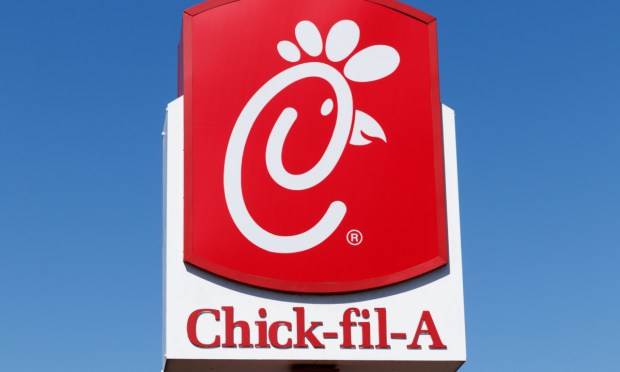Chick-fil-A Opens First Drive-Thru-Only Location as Fast-Food Eateries Shrink

As quick-service restaurants (QSRs) look to meet consumers’ growing demand for quick, convenient off-premises options, many are saving on real estate by shrinking on-site seating areas or losing their dining rooms altogether.
Most recently, chicken chain Chick-fil-A, which has more than 2,800 restaurants across the United States and Canada, announced that it is opening its first drive-thru-focused location with no dine-in options in Honolulu, Hawaii. The store includes a two-lane drive-thru with one for ordering and the other for mobile order-ahead pickup, as well as three walk-up windows for customers on foot.
The news comes as restaurants across the QSR industry adapt their physical stores to adjust for the rise of mobile ordering and other off-site channels. Last month, for instance, Restaurant Brands International’s Tim Hortons coffeehouse chain announced the launch of its own small-format, drive-thru-only concept, opening in a handful of states this summer.
In a 2021 interview with PYMNTS, Taco Bell’s then President and Chief Operating Officer Mike Grams spoke to the brand’s intention to shrink its stores’ footprints.
“So much has changed in even the past two years, [and] it’s exciting to think of what can continue to evolve,” said Grams. “As we look ahead, we’re excited by the challenge to reduce our restaurant footprint in concepts of the future, to better cater to our customers’ evolving needs.”
These initiatives may make sense for QSRs, whose value prop is centered on convenience, but early results would suggest that they do not go as well for brands associated with a more full-service experience.
Earlier this year, casual dining brand Chili’s closed down the pickup and delivery-only location it was testing in Dallas, Texas.
“We recently closed our Chili’s delivery/carryout location on Mockingbird near SMU [Southern Methodist University] to strengthen the core Chili’s business and focus on innovation within our four walls,” a spokesperson from Chili’s parent company Brinker International told PYMNTS in an email. “With off-premises being one-third of our business or $1 billion annually, we know we have opportunities to refine our To-Go experience and that work is in progress.”
While an off-premises-only location may not make as much sense for a full-service brand, even casual dining chains are being forced to reckon with the rise of off-premises, as Sal Melilli, CEO of Hooters of America, noted in an interview with PYMNTS discussing how the restaurant industry has evolved.
“I would say that the biggest change has been the consumer shift, with the advent of fast-casual dining,” Melilli said. “The consumer’s more on the go. The consumer’s more on demand. So, hence the ability to get food delivered.”
Across the different segments of the restaurant industry, off-premises channels now account for about half of all sales, according to data from PYMNTS’ study “Connected Dining: Rising Costs Push Consumers Toward Pickup,” which drew from a survey of more than 2,100 U.S. consumers earlier this year. The results revealed that 39% of restaurant customers reported having placed their last order for pickup, and just 10% did the same for delivery.
Plus, it seems that over the next few decades, the industry will shift even more toward off-premises channels, given that these are favored by younger consumers. Just 42% of Gen Z diners and 41% of millennials reported having ordered their most recent restaurant meal for on-site consumption.

